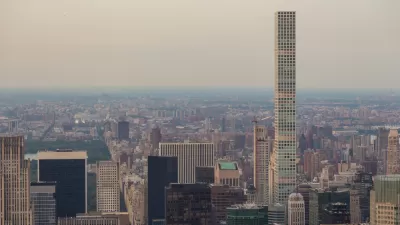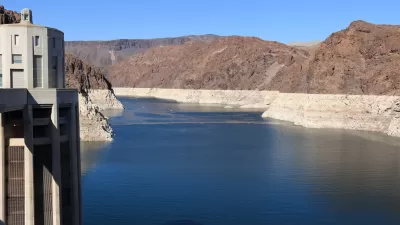As climate change brings prolonged, intense heat waves to cities once associated with rain and cold weather will have to attend to the lack of shelter provided to bus and transit riders.

Michelle Baruchman reports on the state of bus shelters in the city of Seattle, which has weathered a summer beset by record high temperatures—a sign of more heat waves to come as the planet's climate changes.
Baruchman cites data quantifying the city's bus shelters ("Of the approximately 7,500 Metro bus stops across King County, 1,700 have bus shelters…") before interviewing a question-and-answer session with researcher Kevin Lanza, who in 2019 published an article, along with Casey P. Durand, that explored the importance of bus shelters and trees for moderating heat.
In the interview, Lanza states that high temperatures are reducing transit ridership. In Lanza's words:
Trees have been shown to modestly reduce the effect of extreme heat on ridership or reduce the losses of ridership from extreme heat. Bus stop shelters don’t have that same association but both bus stop shelters and trees are proven heat management strategies that can in some specific instances be used exclusively or together to assist with climate adaptation of transportation networks.
While Los Angeles frequently makes news for transit shelter shenanigans, Seattle too passed up a chance to enter a public-private partnership to improve its shelters in 2018. The underfunding and mismanagement of bus and transit shelters is a nationwide problem, as detailed in an article from February 2020.
FULL STORY: How cities can help protect transit riders from extreme heat

Study: Maui’s Plan to Convert Vacation Rentals to Long-Term Housing Could Cause Nearly $1 Billion Economic Loss
The plan would reduce visitor accommodation by 25,% resulting in 1,900 jobs lost.

North Texas Transit Leaders Tout Benefits of TOD for Growing Region
At a summit focused on transit-oriented development, policymakers discussed how North Texas’ expanded light rail system can serve as a tool for economic growth.

Why Should We Subsidize Public Transportation?
Many public transit agencies face financial stress due to rising costs, declining fare revenue, and declining subsidies. Transit advocates must provide a strong business case for increasing public transit funding.

How to Make US Trains Faster
Changes to boarding platforms and a switch to electric trains could improve U.S. passenger rail service without the added cost of high-speed rail.

Columbia’s Revitalized ‘Loop’ Is a Hub for Local Entrepreneurs
A focus on small businesses is helping a commercial corridor in Columbia, Missouri thrive.

Invasive Insect Threatens Minnesota’s Ash Forests
The Emerald Ash Borer is a rapidly spreading invasive pest threatening Minnesota’s ash trees, and homeowners are encouraged to plant diverse replacement species, avoid moving ash firewood, and monitor for signs of infestation.
Urban Design for Planners 1: Software Tools
This six-course series explores essential urban design concepts using open source software and equips planners with the tools they need to participate fully in the urban design process.
Planning for Universal Design
Learn the tools for implementing Universal Design in planning regulations.
Ascent Environmental
Borough of Carlisle
Institute for Housing and Urban Development Studies (IHS)
City of Grandview
Harvard GSD Executive Education
Toledo-Lucas County Plan Commissions
Salt Lake City
NYU Wagner Graduate School of Public Service





























